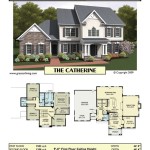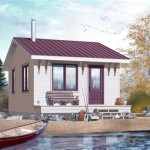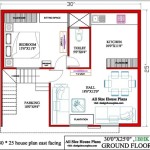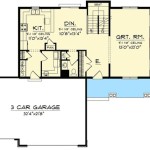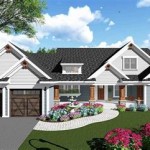House plans with motorhome garages are architectural designs specifically tailored to accommodate the storage and maintenance of large recreational vehicles, known as motorhomes. These garages are designed to provide ample space for motorhomes, typically with high ceilings, wide entryways, and reinforced flooring to support the weight of the vehicle.
Motorhome garage house plans fulfill the need for dedicated spaces to protect these valuable recreational vehicles from weather elements, theft, and other hazards. They offer convenience and peace of mind, allowing motorhome owners to keep their vehicles safe and secure while not in use.
The following article will delve into the benefits, design considerations, and available options for house plans with motorhome garages. We will explore the features that make these plans ideal for motorhome enthusiasts, providing insights into the practical and aesthetic aspects of integrating a motorhome garage into your home’s design.
When considering house plans with motorhome garages, several key points warrant attention:
- Adequate Space: Ensure sufficient space for motorhome parking, including entry and exit maneuvers.
- High Ceilings: Accommodate taller motorhomes with ample headroom.
- Wide Entryways: Allow easy access for large vehicles.
- Reinforced Flooring: Support the weight of the motorhome and any additional storage.
- Utilities Access: Provide hookups for electricity, water, and sewer.
- Natural Lighting: Maximize natural light through windows or skylights for visibility and energy efficiency.
- Insulation: Maintain a comfortable temperature inside the garage, protecting the motorhome from extreme weather.
- Security Features: Enhance safety with security systems, lighting, and access control.
- Aesthetic Integration: Design the garage to complement the overall architectural style of the house.
- Professional Planning: Consult with architects and engineers to ensure proper design and construction.
Considering these factors will help create a functional and aesthetically pleasing house plan that meets the specific needs of motorhome owners.
Adequate Space: Ensure sufficient space for motorhome parking, including entry and exit maneuvers.
Providing adequate space is crucial for house plans with motorhome garages. Motorhomes require ample room for parking, maneuvering, and accessing the garage. Here are key considerations to ensure sufficient space:
- Vehicle Dimensions: Determine the length, width, and height of the motorhome to be accommodated. Consider any slide-outs or awnings that may extend the vehicle’s dimensions.
- Maneuvering Space: Allow ample space around the motorhome for easy entry and exit. This includes turning radius, clearance for doors and windows, and space for hitching or unhitching a tow vehicle.
- Garage Size: The garage should be at least 2-3 feet wider and longer than the motorhome to allow for comfortable maneuvering. Consider the space needed for storage cabinets, workbenches, or other equipment.
- Entry and Exit Paths: Design clear and wide entry and exit paths to the garage. Ensure there are no obstructions, such as trees, fences, or narrow driveways, that could hinder access.
Adequate space planning prevents frustrations and accidents, ensuring the motorhome can be parked and retrieved safely and conveniently.
High Ceilings: Accommodate taller motorhomes with ample headroom.
Motorhomes come in various heights, and it is important to ensure the garage ceiling is high enough to accommodate the tallest point of the vehicle. High ceilings provide several benefits:
- Headroom Clearance: Taller motorhomes require ample headroom to prevent the vehicle’s roof or air conditioning units from scraping against the ceiling.
- Slide-out Clearance: Many motorhomes have slide-outs that extend the living space. High ceilings allow these slide-outs to be fully extended without hitting the garage ceiling.
- Maintenance Access: Adequate headroom facilitates easy access to the motorhome’s roof for maintenance or repairs.
- Ventilation and Airflow: High ceilings promote better ventilation and airflow within the garage, reducing moisture and stale air.
The recommended ceiling height for a motorhome garage is typically around 12-14 feet. However, it is advisable to consult with the motorhome manufacturer to determine the specific height requirement for the particular model.
Wide Entryways: Allow easy access for large vehicles.
Wide entryways are essential for house plans with motorhome garages to ensure easy access for large vehicles. Here are key considerations for wide entryways:
Vehicle Width: Determine the width of the motorhome, including any mirrors, awnings, or other protrusions. The entryway should be at least 2-3 feet wider than the widest point of the vehicle.
Maneuvering Space: Allow ample maneuvering space on either side of the entryway to accommodate turns and adjustments when entering and exiting the garage.
Door Clearance: Ensure there is sufficient clearance above the entryway to accommodate the height of the motorhome’s door when fully open.
No Obstructions: Keep the entryway clear of any obstructions, such as posts, light fixtures, or landscaping, that could hinder the motorhome’s entry or exit.
Wide entryways not only enhance convenience but also prevent damage to the motorhome and the garage structure.
Reinforced Flooring: Support the weight of the motorhome and any additional storage.
Reinforced flooring is a crucial aspect of house plans with motorhome garages. Motorhomes are heavy vehicles, and the garage floor must be able to withstand the weight of the vehicle, as well as any additional storage or equipment that may be kept in the garage.
The type of flooring used for a motorhome garage will depend on the weight of the motorhome and the intended use of the garage. Common flooring options include:
- Concrete: Concrete is a durable and strong flooring material that can support heavy loads. It is often used in commercial garages and workshops.
- Reinforced Concrete: Reinforced concrete is concrete that has been reinforced with steel bars or mesh. This makes it even stronger and more durable than regular concrete.
- Asphalt: Asphalt is a less expensive option than concrete, but it is not as strong. It is often used in residential driveways and parking lots.
In addition to the type of flooring, the thickness of the flooring is also important. The thicker the flooring, the more weight it can support. A minimum thickness of 4 inches is recommended for motorhome garages.
Once the type and thickness of the flooring has been determined, it is important to properly install the flooring. The flooring should be level and free of any cracks or defects. It is also important to seal the joints between the flooring and the walls to prevent moisture from seeping in.
Utilities Access: Provide hookups for electricity, water, and sewer.
Providing access to utilities is essential for the convenience and functionality of house plans with motorhome garages. Motorhomes are equipped with various appliances and systems that require electricity, water, and sewer connections.
- Electricity: Motorhomes rely on electricity to power their appliances, lighting, and heating and cooling systems. A dedicated electrical hookup in the garage provides a convenient and safe way to connect the motorhome to an external power source.
- Water: Access to water is necessary for showers, sinks, toilets, and other appliances in the motorhome. A water hookup in the garage allows the motorhome to be connected to a municipal water supply or a private well.
- Sewer: Motorhomes generate wastewater from sinks, showers, and toilets. A sewer hookup in the garage provides a way to dispose of this wastewater into a municipal sewer system or a private septic tank.
When planning the utilities access in a motorhome garage, it is important to consider the location and accessibility of the hookups. The hookups should be placed in a convenient location that allows for easy connection and disconnection of the motorhome. Additionally, the hookups should be protected from the elements and any potential damage.
Natural Lighting: Maximize natural light through windows or skylights for visibility and energy efficiency.
Natural lighting plays a vital role in house plans with motorhome garages, offering several benefits:
Enhanced Visibility and Safety
Natural light illuminates the garage, improving visibility and creating a safer environment for parking and working on the motorhome. Ample natural light reduces the need for artificial lighting, minimizing shadows and potential hazards.
Reduced Energy Consumption and Costs
By maximizing natural light, the use of artificial lighting can be significantly reduced, leading to lower energy consumption and utility costs. This is particularly advantageous for garages that are used frequently or for extended periods.
Improved Mood and Ambiance
Natural light has a positive impact on mood and well-being. A well-lit garage creates a more inviting and pleasant space for working on or simply being around the motorhome.
To effectively incorporate natural lighting into a motorhome garage, consider the following strategies:
- Windows: Install large windows on walls that face the sun’s path. Position windows strategically to allow natural light to penetrate deep into the garage.
- Skylights: Skylights are an excellent way to introduce natural light from above. They can be placed over the motorhome parking area or in other areas of the garage to provide additional illumination.
- Reflective Surfaces: Use light-colored paint or reflective surfaces on walls and ceilings to bounce natural light around the garage, maximizing its distribution.
Insulation: Maintain a comfortable temperature inside the garage, protecting the motorhome from extreme weather.
Insulation plays a crucial role in house plans with motorhome garages by maintaining a comfortable temperature inside the garage and protecting the motorhome from extreme weather conditions.
Temperature Regulation
Proper insulation helps regulate the temperature within the garage, preventing extreme heat or cold from damaging the motorhome. During hot weather, insulation keeps the garage cooler, reducing the risk of overheating and potential damage to the motorhome’s interior and components. Conversely, in cold weather, insulation helps retain heat, preventing freezing and protecting the motorhome from the elements.
Energy Efficiency and Cost Savings
Insulation contributes to energy efficiency by reducing the need for heating and cooling systems to maintain a comfortable temperature in the garage. This leads to lower energy consumption and utility costs, making the garage more economical to operate.
Motorhome Protection
Extreme weather conditions, such as high humidity, moisture, and temperature fluctuations, can damage the motorhome’s exterior and interior. Insulation provides a protective barrier, minimizing the impact of these elements on the motorhome’s finish, appliances, and overall condition.
To effectively insulate a motorhome garage, consider the following measures:
- Walls: Install insulation between the garage’s walls and exterior cladding. Choose insulation materials with high thermal resistance (R-value) for optimal performance.
- Ceiling: Insulate the ceiling to prevent heat loss or gain through the roof. Consider using spray foam insulation or batt insulation for effective coverage.
- Garage Door: Insulate the garage door to minimize heat transfer through this large opening. Install insulated panels or use foam insulation to seal any gaps around the door.
Security Features: Enhance safety with security systems, lighting, and access control.
Security Systems
Installing a comprehensive security system is essential for safeguarding the motorhome and other valuables stored in the garage. Consider the following components:
- Motion Sensors: Detect movement within the garage, triggering an alarm or sending notifications to your smartphone.
- Door and Window Sensors: Monitor the opening and closing of garage doors and windows, alerting you to any unauthorized access attempts.
- Security Cameras: Provide visual surveillance of the garage, allowing you to monitor activity remotely and record footage for evidence if necessary.
Lighting
Adequate lighting is a crucial deterrent against crime and enhances safety when entering or exiting the garage, especially at night. Consider the following lighting strategies:
- Motion-Activated Lights: Install motion-activated lights that illuminate the garage when movement is detected, providing a bright deterrent to potential intruders.
- Exterior Floodlights: Mount floodlights around the garage perimeter to illuminate the surrounding area and make it less appealing to criminals.
- Garage Door Lighting: Ensure the garage door area is well-lit to increase visibility and discourage tampering.
Access Control
Controlling access to the garage is vital for security. Consider these measures:
- Keyless Entry: Install a keyless entry system that allows you to open the garage door remotely using a keypad, smartphone app, or biometric scanner.
- Garage Door Lock: Add a physical lock to the garage door for additional security, preventing unauthorized entry even if the door opener is compromised.
- Gated Entry: If the garage is part of a larger property, consider installing a gated entry system to restrict access to the garage area.
By implementing these security features, you can create a secure environment for your motorhome and other belongings, providing peace of mind and deterring potential threats.
Aesthetic Integration: Design the garage to complement the overall architectural style of the house.
Aesthetic integration is crucial for house plans with motorhome garages to ensure the garage seamlessly blends with the architectural style of the house. By considering the following design elements, you can create a harmonious and visually appealing exterior.
- Architectural Style:
Match the architectural style of the garage to the main house. Whether it’s traditional, modern, or contemporary, the garage should complement the existing design elements, such as rooflines, siding materials, and window styles.
- Materials and Finishes:
Use similar materials and finishes for the garage as the house. This creates a cohesive look and avoids the garage appearing as an afterthought. Consider matching the siding, roofing, and trim to maintain a consistent aesthetic.
- Proportions and Scale:
Ensure the garage’s proportions and scale are in harmony with the house. A garage that is too large or too small can disrupt the visual balance of the property. The size and shape of the garage should complement the overall dimensions and architectural features of the house.
- Landscaping and Hardscaping:
Incorporate landscaping and hardscaping elements to enhance the aesthetic appeal of the garage. Plant trees, shrubs, or flowers around the garage to soften its appearance and create a more natural transition between the garage and the house. Hardscaping elements, such as walkways, patios, or driveways, can further define the space and improve functionality.
By carefully considering aesthetic integration, you can design a motorhome garage that not only provides functionality but also enhances the overall beauty and value of your home.
Professional Planning: Consult with architects and engineers to ensure proper design and construction.
Professional planning is crucial for house plans with motorhome garages to ensure structural integrity, functionality, and compliance with building codes. Consulting with architects and engineers brings expertise and experience to the design and construction process, leading to a well-executed garage that meets your specific needs.
Architects specialize in designing spaces that are both aesthetically pleasing and functional. They can create custom plans that seamlessly integrate the garage with the architectural style of your home, considering factors such as scale, proportions, and materials. Engineers, on the other hand, focus on the structural integrity and safety of the garage. They ensure that the foundation, framing, and other structural elements can withstand the weight and forces exerted by the motorhome and any additional storage or equipment.
The collaboration between architects and engineers is essential to address all aspects of the garage’s design and construction. They work together to create plans that meet building codes, ensuring the garage is safe and habitable. They also consider factors such as energy efficiency, ventilation, and accessibility to optimize the garage’s functionality and comfort.
Professional planning is an investment that pays off in the long run. By involving architects and engineers from the outset, you can avoid costly mistakes, ensure the garage is built to last, and create a space that perfectly accommodates your motorhome and enhances the overall value of your property.
Here are some key benefits of consulting with architects and engineers for your motorhome garage project:
- Customized Design: Architects can create tailored plans that meet your unique requirements, ensuring the garage seamlessly integrates with your home’s architectural style and complements its surroundings.
- Structural Integrity: Engineers ensure the garage’s structural elements are designed to safely support the weight of the motorhome and any additional loads, providing peace of mind and longevity.
- Building Code Compliance: Professionals ensure the garage design complies with local building codes, guaranteeing it meets safety and construction standards, reducing the risk of legal issues or fines.
- Energy Efficiency: Architects and engineers can incorporate energy-efficient features into the garage’s design, such as insulation, proper ventilation, and natural lighting, minimizing energy consumption and reducing operating costs.
- Enhanced Functionality: Professionals consider factors like accessibility, storage space, and ease of use when designing the garage, creating a space that is both practical and convenient for your needs.










Related Posts

